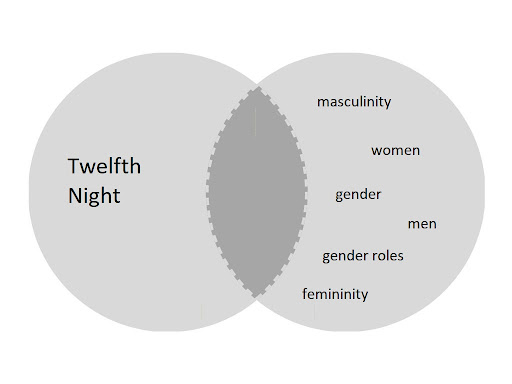9.3–Generating Ideas
Dorothy Todd; Sarah LeMire; and Terri Pantuso
As mentioned earlier, once you get a sense of the conversations revolving around your chosen text or texts, it’s time to think about how you might add to one or more of these conversations. Even if you have a good sense of what you want to write about, the following strategies (used either individually or together) can help you generate ideas for the focus of your paper, identify potential evidence for your argument, and begin to develop an organizational structure for your essay.
Common Invention Strategies
For all of the following strategies, write down as many ideas as you can as quickly as you can. Don’t judge the ideas based on their quality; just focus on coming up with as many as possible. These techniques work well in groups or on your own.
Brainstorming
Brainstorming is a general term where a writer randomly comes up with topic ideas as they occur in their brain. There are no criteria, one simply lists ideas for topics. An example of what this might look like follows:
| Standards of beauty in novels | Portrayals of nannies in poetry | Poems that talk about food |
| Plays about kings | Movie adaptations of Shakespeare | Short stories about war |
| First-person adolescent girl narratives | Depictions of non-traditional families in novels | Weather as a central character in plays |
Freewriting
Give yourself about 5-10 minutes to write, nonstop, ideas that come to mind about your potential topic. Do not worry about spelling, punctuation, grammar, or any rules. The goal is to get your ideas out as they come to mind. This is different from brainstorming because you are writing one nonstop sentence rather than a list of words. Sometimes known as freewriting, this technique affords you the opportunity to work through ideas. An example follows:
Sula is a book about women’s relationships with other women and with their children and in the absence of men It is a book that explores themes of racial inequity unequal treatment it is difficult and awkward it is one of Toni Morrison’s best books even though it is short I like short books this does not mean it is not a good book it is a critical piece of writing on difficult topics difficult topics sometimes make people uncomfortable but being uncomfortable can lead to change but Sula never changes but the community does community is important during times of trouble
Clustering or Creating a Cluster Map
Select 2-3 words that you feel are central to your topic. Write each one in the middle of a page and draw a circle around it. As you think about each word individually, write other ideas that relate to those central words around your central topic and draw circles around the branching ideas. Connect them with lines to the center/central topic. This method is referred to as clustering because your ideas cluster around the central topic. This visual method can be used to develop your thesis.

As you list ideas and start thinking about connections between words and concepts, you might find yourself moving from a broad set of ideas (gender in Twelfth Night) to a more narrow focus that would be an appropriate topic for an essay (considering how the presentation of gender in Twelfth Night informs the play’s comedic scenes). Notice how creating a cluster map also reveals how open-ended a potential topic could be. A writer could have started out with the same topic—gender in Twelfth Night—and moved in an entirely different direction, perhaps thinking about depictions of masculinity through the characters of Orsino and Sebastian.
Creating a Word Map
Pick a key word, concept, idea, or theme from the text. Write down possible definitions, synonyms, and antonyms for your chosen word or concept. This technique can help you make previously unnoticed connections across a text and can even help you identify potential search terms before you delve into research. An example follows below:
| Key word/concept/idea/theme | Synonyms | Antonyms |
| Despair | Destitute; broken dreams; nothingness; despondent | Optimistic; happy; endless possibilities; hope |
| Enlightenment | Knowledge; insight; aha moment; new information | Stunted; deterred; restrained |
| Food trucks | Mobile restaurants; meals on wheels; edibles on the go | Fixed buildings; restaurants; cafes; fine dining |
Designing a Venn Diagram
Draw a pair of intersecting circles. In one circle, list the text you’re interested in writing about: in this case, Twelfth Night. In the second circle, write down an aspect of the text that interests you. Let’s say you’re interested in gender in Twelfth Night. You’d list gender in the second circle, and then brainstorm other related terms, such as sexuality or women, to support or narrow down your topic, as is depicted in Figure 8.3.

As you list terms, you may find that there is a concept that piques your interest. For instance, you may find that the idea of gender roles in Twelfth Night seems interesting. You could then use this topic for your essay.
Attribution:
Todd, Dorothy, Sarah LeMire, and Terri Pantuso. “Writing a Literary Essay: Moving from Surface to Subtext: Generating Ideas.” In Surface and Subtext: Literature, Research, Writing. 3rd ed. Edited by Claire Carly-Miles, Sarah LeMire, Kathy Christie Anders, Nicole Hagstrom-Schmidt, R. Paul Cooper, and Matt McKinney. College Station: Texas A&M University, 2024. Licensed under a Creative Commons Attribution-NonCommercial 4.0 International License.

